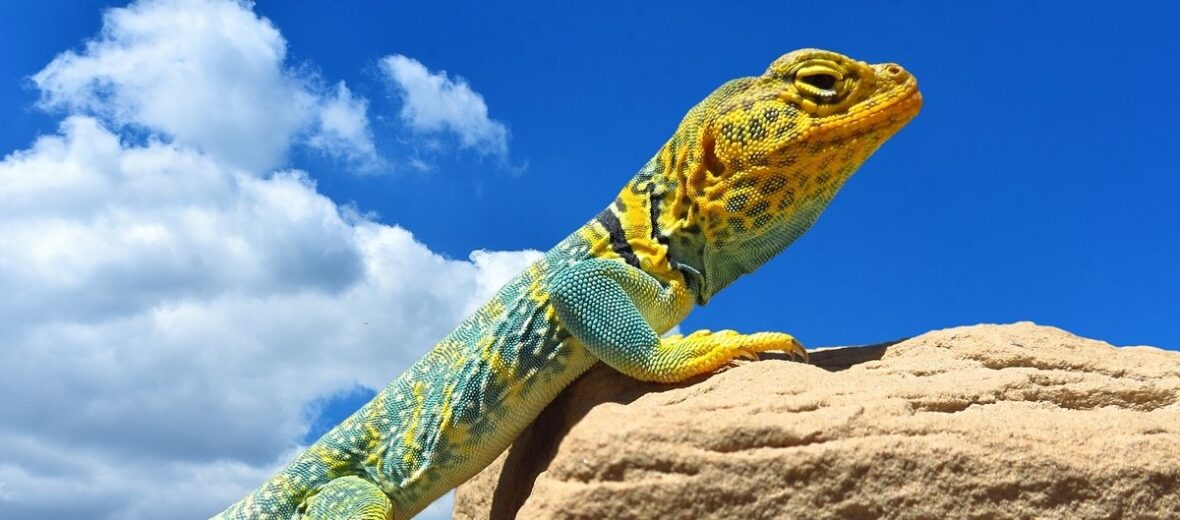
The common collared lizard, aka Oklahoma collared lizard, eastern collared lizard, yellow-headed collared lizard, or collared lizard, can be found in central and southwestern United States and Mexico. They prefer dry, open habitats with desert scrub, sagebrush, open woodlands, canyons, and rocky areas with light vegetation. Due to no substantial threats, sans the potential for habitat loss, and also having a stable population, these lizards are listed as Least Concern by the IUCN.
First the Stats…
Scientific name: Crotaphytus collaris
Weight: Up to 4.23 ounces
Length: Up to 15 inches, including their tail
Lifespan: Up to 8 years
Now on to the Facts!
1.) There are 5 recognized subspecies of collared lizard.
2.) These lizards, like so many others, are diurnal (active during the day).
3.) They are solitary and only come together to mate.
4.) A group of lizards is called a lounge.
5.) During colder winter months, they will hibernate under large rocks.
But wait, there’s more on the common collared lizard!
6.) They are active from March – September.
7.) Primarily eating insects, these lizards will also turn to eating other various invertebrates, smaller lizards, and even small snakes.
Did you know…?
The common collared lizard can run at speeds of up to 16 mph! They typically run on their hind legs.
8.) Females lay up to 10 eggs that hatch in up to 3 months.
9.) The hatchlings are precocial (self sufficient) and there is no natal care.
10.) Larger lizards, snakes, roadrunners, hawks, coyotes, and house cats all prey on these critters.
Now a Short Common Collared Lizard Video!
Be sure to share & comment below! Also, check out the Critter Science YouTube channel. Videos added regularly!
Want to suggest a critter for me to write about? Let me know here.
Some source material acquired from: Wikipedia & IUCN



